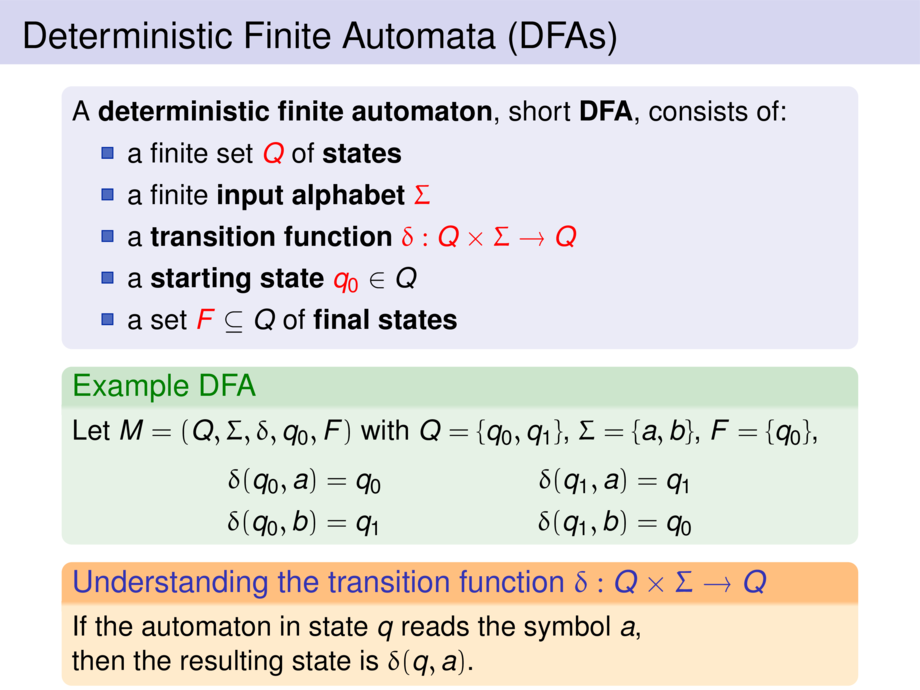



































































































5/122
\begin{frame}{Deterministic Finite Automata (DFAs)}
\begin{block}{}
A \emph{deterministic finite automaton}, short \emph{DFA}, consists of:
\begin{itemize}\setlength{\itemsep}{0ex}
\item
a finite set \alert{$Q$} of \emph{states}
\item
a finite \emph{input alphabet} \alert{$\Sigma$}
\item
a \emph{transition function} \alert{$\delta : Q \times \Sigma \to Q$}
\item
a \emph{starting state} $\alert{q_0}\in Q$
\item
a set $\alert{F} \subseteq Q$ of \emph{final states}
\smallskip
\end{itemize}
\end{block}
\pause
\begin{exampleblock}{Example DFA}
\edfa\vspace{-3ex}
\end{exampleblock}
\pause
\begin{goal}{Understanding the transition function $\delta : Q \times \Sigma \to Q$}
If the automaton in state $q$ reads the symbol $a$,\\
then the resulting state is $\delta(q,a)$.
\end{goal}
\end{frame}

